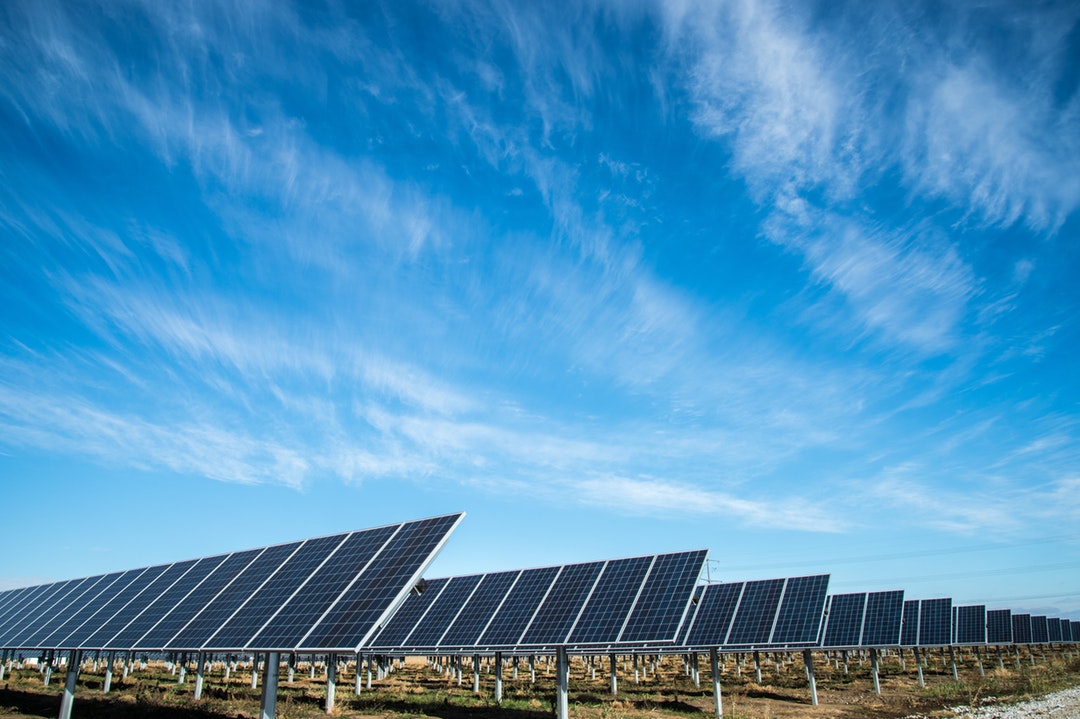Green and Clean: 7 Types of Renewable Energy That’ll Shape the Future

From the onset of the industrial revolution, human beings have relied on fossil fuels to meet the vast majority of their energy needs. Fortunately, that’s all beginning to change.
Now, scientists, businesses, and governments are going to great lengths to utilize alternative forms of energy. In doing so, they are reducing pollution, saving money, and creating a more environmentally-friendly world.
There are all types of renewable energy being used, all of which are bound to be the future of energy. Curious as to what they are? Read on to find out!
Types of Renewable Energy
Renewable energy is undoubtedly the future of energy. These are the most prominent renewable energy sources in existence.
1. Geothermal Energy
Geothermal energy is energy which comes from the heat of the earth. It can be sourced from a number of different portions of the earth’s crust, including the area directly beneath our feet as well as the area several miles beneath our feet.
When harnessed, geothermal energy can be turned into electricity and used to power everything from lights, to machines, and otherwise. While the vast majority of this energy is extracted in power plants, small amounts of it can be extracted with the use of heat pumps.
In addition to being used as electricity, geothermal energy can also be used directly. Currently, businesses and homeowners use it for heating and cooling, climate-controlled plant cultivation, and chemical processes such as pasteurization.
2. Solar
You’ve undoubtedly heard about solar power or energy which comes from the sun. This is probably the most well-known form of alternative energy, as it can be and is used in both the commercial and residential sectors.
Harnessing solar power is easy to do. All you need is a set of photovoltaic (PV) panels and a sunny day. As long as the PV panels absorb the rays of the sun, they will store the energy contained within them.
At the present time, once solar power is harnessed, it can be used to light, heat, and cool buildings. Note, however, that as researchers and scientists become better-versed in the harnessing of solar power, they will be able to use it for even more intensive purposes, such as the powering of cars.
3. Hydrogen
Did you know that hydrogen can be used to provide energy? This element is a pollution-free energy source, one which can be found in water, algae, and a variety of other entities. While it’s currently expensive to harness as energy, it could very well become an integral energy source as it becomes easier to produce.
At the present time, hydrogen energy is used almost exclusively in the industrial sector. Not only is it used to refine chemicals, but to process foods, and produce fertilizer.
While they’re not even close to being the norm, there are also cars and boats which are powered by hydrogen. As researchers come to understand hydrogen energy with more nuance, more of these vehicles will likely be manufactured.
4. Hydroelectric Energy
Hydroelectricity is a form of electricity that’s generated by water. To produce such electricity, one must store water within a dam. Then, when electricity is to be produced, said water must be released from the dam and run through a series of energy-producing turbines.
The clearest example of a hydroelectric dam is the monstrous Hoover Dam outside of Las Vegas, Nevada. However, not all hydroelectric dams are of this size. Only a small dam is needed to create the desired effect.
Hydroelectricity can be used for all electricity purposes, from powering machines, to illuminating lights, and more. Currently, this form of energy is used almost exclusively for commercial purposes.
5. Ocean Energy
The ocean provides energy in two different ways: 1. Though the heat that it absorbs, and 2. Through the movement of its waves. In both cases, electricity is generated.
At the present time, ocean energy is a fringe energy source. It’s used in a supplementary manner on the commercial front, but can not yet be harnessed in a way that would make it a primary energy source. Note, however, that scientists and researchers are doing everything they can to improve its efficacy.
At the current time, ocean energy is used in seaside towns, exclusively. These towns are using it to generate electricity and to directly cool buildings.
6. Bioenergy
Bioenergy is a form of energy which is harnessed from biomass. What’s biomass, you ask? It’s the organic matter of decayed plants and animals.
While not as clean as some other types of alternative energy, bioenergy still involves fewer carbon emissions than fossil fuels. This, combined with its renewable capacity, makes it a viable energy option for commercial purposes.
At the present time, bioenergy is used to power specific vehicles, produce electricity, and create steam. When used for these purposes, it can heat buildings, power lights, and supplement widescale industrial operations.
7. Wind Energy
Have you ever come across a series of turbines sitting in an open field? If so, you were witnessing the harnessing of wind energy. Wind energy is used to create electricity and is generated by the moving of said turbines.
There are wind energy pros and cons. However, as far as researchers can currently tell, the advantages drastically outweigh the disadvantages.
Currently, wind energy is used on a primarily supplemental basis. This is to say that businesses will still use traditional electricity to accommodate the lion’s share of their needs, but will also use whatever wind energy they can obtain in order to improve the overall energy efficiency of their operations.
Brush Up on Your Scientific Knowledge
At the present time, scientists and researchers are experimenting with many different types of renewable energy, including but not limited to the types of energy discussed above. While these forms of energy are currently only being used in a supplemental manner, they are bound to be heavily used in the future. It’s just a matter of time.
Interested in further brushing up on your scientific knowledge? If so, you’re in the right place. Our website has scientific information of all kinds.
Browse our other amazing science articles now!



